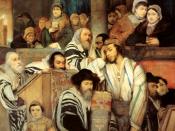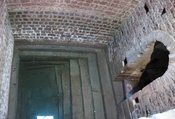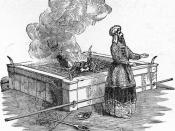Judaism is a monotheistic religion. It claims Abraham as a patriarch of many nations, that's why it is called an Abrahamic religion like Christianity and Islam. Judaism is divided into three branches: Conservative Judaism, Reform Judaism, and Orthodox Judaism. Reform is a very open-minded interpretation of Judaism, and the most modern Jews will normally belong to this. Orthodox Jews have a fundamentalist and strict understanding of their religion. The Conservatives lie between Orthodox and the Reform. (Kjeilen, 2007) "With an estimated 14 million adherents in 2006, Judaism is approximately the world's eleventh-largest major religious group."(Judaism, 2007, Para 3)Around 200 BCE God established a covenant with Abraham and the Israelites. From then and until 100 CE, the Tanakh (Jewish Bible) was gradually canonized. Jewish religious works that made it to the Greek translation of the Bible became to be known as the deuterocanonical books. During this era Moses received the Mosaic Law from GOD, David established Jerusalem as the religious and political center and Solomon built the first Jewish temple.
Shortly after the death of Solomon in 922 BCE, the Northern kingdom of Israel and the Southern kingdom of Judah has divided. Israel fell to Assyria and Judah fell to the Babylonians. The first temple was destroyed. Some Jews returned from captivity and restored the temple in 536 BCE. Alexander the Great invaded the area in 332 BCE. In 63 BCE, the Roman Empire took control of Judea and Israel.
Between 520 BCE and 516 BCE the second temple was built. In 444 BCE Ezra instituted the synagogue and prayer services and canonized the Torah. In the period of 66-70 CE the Great Jewish Revolt ended with destruction of the Second Temple and the fall of Jerusalem. The period from the destruction of the temple onward gave rise to heavy...


